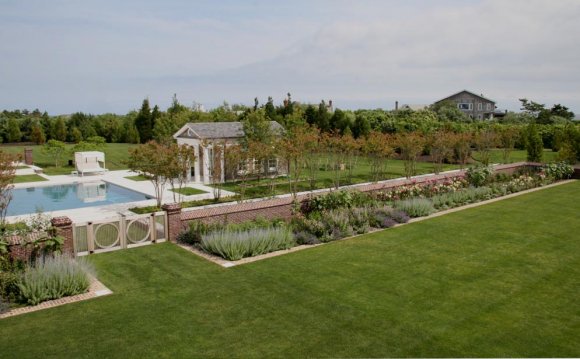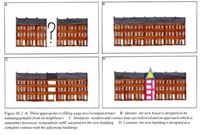
 Landscape PLANNING: Definitions Planning Agriculture Context theory Cycling EID Forestry Green Towns Greenways Landscape plans Minerals Parks POS Reservoirs Rivers Sustainability Transport Urbanisation Books on landscape planning Links
Landscape PLANNING: Definitions Planning Agriculture Context theory Cycling EID Forestry Green Towns Greenways Landscape plans Minerals Parks POS Reservoirs Rivers Sustainability Transport Urbanisation Books on landscape planning Links
The problem: How should a development project relate to its context?
For example:
- Should new reservoirs be designed to look like natural lakes?
- Should new buildings in urban areas be designed to resemble their neighbours?
- Should the 'traditional' character of rural buildings be used to inspire new buildings?
- Should road embankments be designed as farmland or as wildlife habitats?
- Are some sites specially suited to dramatic and monumental structures?
- Should new forests be planted with indigenous species, to resemble native forests?
- Should bridges be designed according to purely functional criteria, or should some be 'traditional' and others 'modern'?
- Should residential areas near public open spaces have a higher population density than areas distant from public open space?
- Should mineral workings be concealed, or should they be designed to create spectacular cliff scenery?
- What aesthetic and ecological criteria should influence the design of new roads?
These questions have multiple dimensions: administrative, aesthetic, ecological, historical, cultural, recreational, financial, climatic, hygienic, legal, and so forth. The great questions for public policy are:
- WHEN should the public intervene?
- HOW should the intervention take place?
- WHAT should be achieved by intervention?
When to intervene As much as necessary but as little as possible
How to intervene
There are three main approaches to the environmental regulation of development in a liberal democracy:
- by means of zoning and land use plans. This approach works from the general to the particular.
- by means of environmental impact assessment and control. This approach works from the particular to the general.
- by a combination of zoning with environmental assessment. This is the best approach.
Control by zoning Zoning plans reserve areas for defined land uses, but fail when they are exclusive.
Control by environmental assessment Control by EA fails when it is too pragmatic.
Design Control Design control works best with the aid of forward-looking plans.
What to achieve by intervention
Theories of context Contextual decisions need a theoretical context
 Genius loci An early eighteenth century theory, that buildings and planting should respond to the Genius of the Place, created a still-influential theory of context.
Genius loci An early eighteenth century theory, that buildings and planting should respond to the Genius of the Place, created a still-influential theory of context.
The picturesque Late eighteenth century contextual theorists held that landscapes should be designed with a picturesque 'transition' from the works of man to the works of nature.
Modernism Modernist architectural theory held that the appearance of structures should be a consequence of social function and abstract artistic principles, not contexts.
The Identity Index An index can be used to define the extent to which development projects will be Similar to, Different from or Identical with their context.
GIS and context A GIS can assist in checking the impact of development projects upon natural, social and aesthetic aspects of the context. It provides the data for co-ordinating the environmental assessment and land use planning systems.
Conclusion Conservation is not enough
One of the great lessons of the twentieth century is that bad planning, like no planning, leads to lack of respect for human rights and the destruction of public goods. Individuals and groups of individuals are often selfish. Without contraints, we destroy nature's bounty of fresh air, clean water, fine scenery, good earth and healthy vegetation. Hence the case for public intervention in private land use decisions. This chapter has reviewed the issues of when intervention should take place, how it should be done and what should be achieved. With regard to landscape planning, the following conclusions have been reached:
- When to intervene? Intervention should take place when there are positive or negative environmental impacts on public goods.
- How to intervene? Intervention should be guided by a combination of zoning with environmental impact procedures, both statutory and non-statutory.
- What to achieve by intervention? Intervention should achieve better relationships between development and context.
Intervention should be guided by knowledge of the past, an environmental database, alternative visions of the future, environmental controls and theories of context. So much damage has already been done that conservation is not enough. We can and must prepare landscape plans for the renewal of earth, water, vegetation, air and other public goods. But it does not follow that these plans need the force of law. Regulations are ineffective without imaginative leadership.
Refs
Turner, T., Landscape planning and environmental impact design UCL 1998 Chapter 3
Context Policy
- Requiring all designers to make development similar to its context would be unreasonable
- But it is entirely reasonable to require each and every development project team to EXPLAIN the planned relationship between a development and its context.
- The three logical alternatives for contextual policy are:
YOU MIGHT ALSO LIKE

![[PDF Download] Landscape Design: Theory and Application](/img/video/pdf_download_landscape_design_theory_and.jpg)









